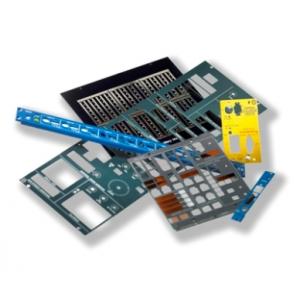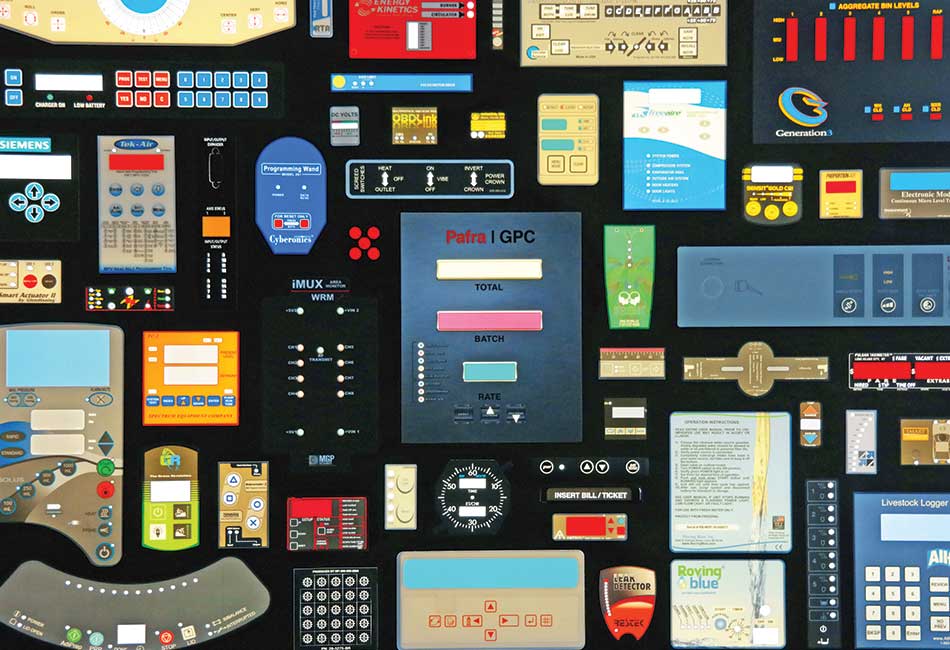A Comprehensive Guide to Choose Graphic Overlays and Panels
Selecting the appropriate graphic overlays and panels is a nuanced procedure that requires careful consideration of numerous elements, including material properties, printing strategies, and layout elements. The selection between materials such as polycarbonate, polymer, and polyester can substantially impact both sturdiness and capability, while the positioning of printing techniques with aesthetic demands is just as crucial. Recognizing usability and adherence to sector criteria can greatly improve the overall performance of the item. Hence, a comprehensive expedition of these components is important to achieving optimum cause visuals overlay choice. When making these selections?, what details elements should one prioritize.
Comprehending Graphic Overlay Materials
Recognizing the characteristics of graphic overlay products is important for ensuring both performance and durability in design applications. These products offer as protective layers that not just boost the visual allure of a product but likewise perform important duties in user communication and tool operation.
The most usual products utilized in visuals overlays include polyester, polycarbonate, and acrylic. Acrylic overlays supply clarity and are usually picked for their optical residential properties, though they might not use the exact same level of impact resistance as polycarbonate.
Additionally, the thickness of the overlay can impact both tactile feedback and durability. Thicker overlays give improved resilience but may reduce versatility, while thinner choices can offer even more elaborate style possibilities. Comprehending these attributes enables designers to choose the proper products that line up with the specific requirements of their projects, making certain optimal efficiency and longevity of the graphic overlays in numerous applications.
Secret Printing Methods
Usually, the choice of printing methods is a crucial aspect in the production of visuals overlays and panels, as it straight influences both the aesthetic quality and longevity of the final product. One of the most generally utilized printing strategies include display printing, digital printing, and pad printing, each offering unique advantages.
It provides excellent toughness versus wear, making it optimal for overlays that will experience regular usage. Digital printing, on the other hand, permits for complex designs and high-resolution images, making it ideal for personalized or low-volume projects.
Pad printing is especially useful for using graphics onto irregular surfaces, guaranteeing regular top quality across different shapes. This technique is usually picked for its precision and capability to print great information.
Inevitably, the choice of printing method must align with the details useful requirements and visual objectives of the visuals overlay or panel, guaranteeing that the end product fulfills both visual and efficiency requirements.
Layout Factors To Consider
When choosing visuals overlays and panels, design factors to consider play a critical duty in making sure that the last product not just fulfills functional needs but likewise aligns with branding and user experience objectives. The aesthetic components, including color design, typography, and imagery, have to show the brand name identification and resonate with the target market. Graphic Overlay and Panels. A cohesive layout boosts recognition and find more supports brand name loyalty
Additionally, the layout needs to focus on simplicity of navigation, making certain that crucial information is easily accessible. This includes strategic placement of buttons, symbols, and text to assist in customer communication. The choice of materials also affects layout; for instance, a matte coating might reduce glare, while a shiny surface area can enhance vibrancy.
Furthermore, the total measurements and shape of the overlay must think about the designated application and gadget compatibility - Graphic Overlay and Panels. Personalized shapes may give a distinct aesthetic, however they need to not endanger performance
Functionality and Performance
Use and functionality are essential aspects that determine the efficiency of graphic overlays and panels in real-world applications. The primary goal of these components is to improve individual communication while ensuring that essential info is conveniently obtainable. A properly designed visuals overlay needs to facilitate user-friendly navigating and advertise effective procedure of the tool or user interface it goes along with.
When picking a visuals overlay, consider the layout and the arrangement of controls. The layout should prioritize often utilized functions, positioning them within easy reach. Furthermore, clear labeling with proper symbols or text is crucial for fast recognition and understanding. Shade contrasts and responsive responses can better improve functionality, aiding customers to compare various functions and making certain a smooth operational experience.
Functionality additionally includes the overlay's longevity and resistance to environmental factors. A robust graphic overlay needs to stand up to damage, including direct exposure to chemicals, wetness, and temperature variations, without endangering its clarity or tactile buildings. Evaluating both use and functionality throughout the option procedure is vital for making certain that the visuals overlay or panel satisfies the certain demands of the application while supplying a positive customer experience.
Conformity and Requirements
Picking graphic overlays and panels requires focus not just to functionality and capability however additionally to conformity with market requirements and regulations. Ensuring that your overlays meet these standards is crucial for item efficiency, safety, and market acceptance.
Different industries have particular guidelines that must be followed. Medical devices useful site are subject to the FDA's guidelines, while automotive applications need to abide with ISO standards. Get More Information Recognizing these demands early in the style procedure will reduce the danger of expensive revisions or delays.
Material selection is also important for compliance; specific chemicals and substances may be restricted or need accreditation. Overlays utilized in food-related applications must satisfy FDA standards for food call materials, guaranteeing they do not leach dangerous substances. Additionally, electro-magnetic compatibility (EMC) requirements may apply, specifically in electronic devices, demanding careful consideration of products and style to protect against interference.
Including compliance checks throughout the layout and manufacturing process not just safeguards your product yet likewise improves its integrity in the market. Knowledge with pertinent standards is vital for any kind of organization included in the development of visuals overlays and panels.

Conclusion
In final thought, selecting graphic overlays and panels necessitates mindful factor to consider of material residential properties, publishing methods, and style aspects. A detailed understanding of these variables promotes informed decision-making, inevitably leading to successful layout outcomes in visuals overlays and panels.

When choosing visuals overlays and panels, layout considerations play a critical function in making sure that the final product not just meets useful requirements however additionally aligns with branding and individual experience objectives.In conclusion, picking visuals overlays and panels demands careful consideration of product residential or commercial properties, publishing strategies, and layout aspects. A detailed understanding of these variables helps with educated decision-making, inevitably leading to effective design end results in visuals overlays and panels.